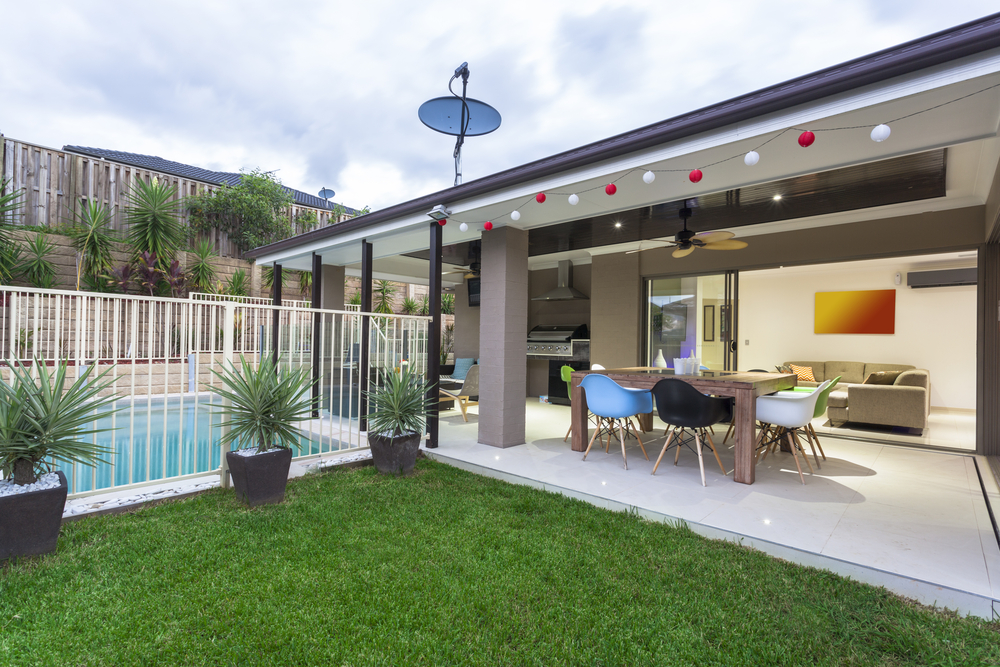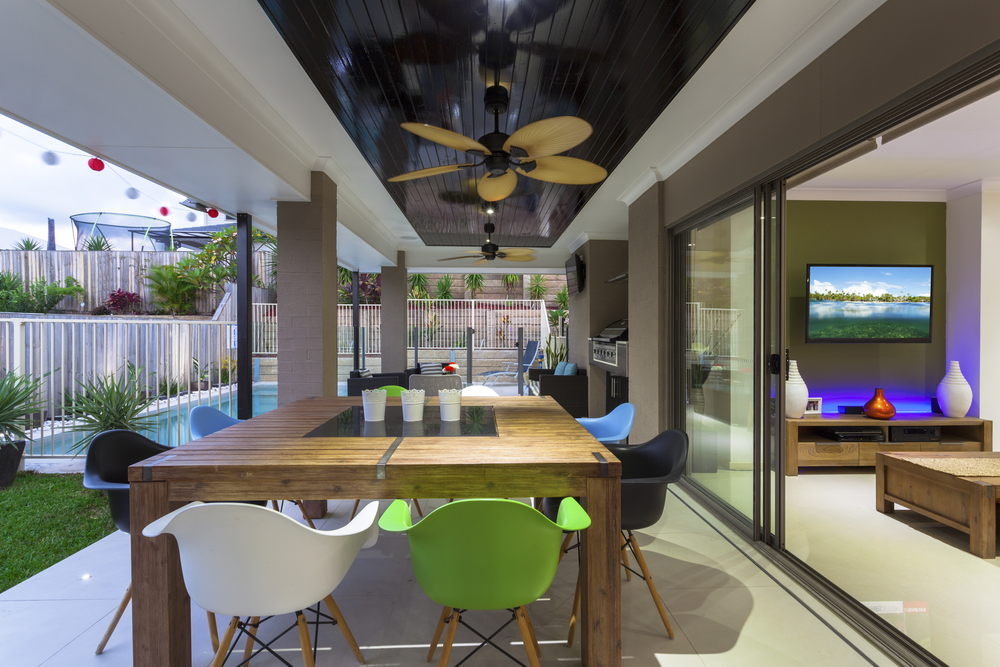Signs Your Pool Fence No Longer Meets Safety Standards
July 18, 2025

Products
balustrading
.webp)

locks and latches
.webp)

security and privacy
.webp)

In Sydney, backyard pools are a cherished part of the lifestyle. However, with that enjoyment comes responsibility. A secure, compliant pool fence isn’t just a legal requirement; it’s a vital safeguard for children, pets, and visitors. Over time, even well-built fences can become unsafe due to shifting regulations, harsh weather, or unnoticed wear and tear. The danger often goes undetected until an accident happens or a council inspection fails. Experts at Poolsafe Fencing have seen firsthand how quickly safety standards can change and how easily homeowners can fall out of compliance without realising it. That’s why it’s essential to recognise the early warning signs that your pool fence may no longer meet today’s regulations.
In this guide, we’ll walk you through the key red flags to watch for, so you can keep your pool area safe and legally sound. Let's get started!

A safe, great-looking pool area doesn’t just happen; it starts with a well-maintained fence. A well-maintained pool fence provides security and enhances the overall look of your outdoor space. However, over time, fences can show signs of wear and tear. That’s why regular fence checks are key to keeping everything safe and up to standard. Below, we discuss the key indicators that your pool fence may be due for replacement or repair.
For metal fences, rust is a common issue because salty air accelerates corrosion. Regularly inspect the fence for any signs of rust, which typically appears as reddish-brown spots on the metal surface. Rust affects the appearance and weakens the structure. If left untreated, it can severely compromise safety.
Different materials show deterioration in various ways. Wooden fences may exhibit rotting, warping, or splintering. If parts of the wood feel soft or spongy, it’s likely a sign of rot. Vinyl fences, while generally durable, can become brittle as time passes due to prolonged exposure to UV rays. Look for any cracks or discolouration in the panels.
Damaged panels are not only unsightly but can also create potential safety hazards. Cracked or bent panels, whether from age, weather, or an accident, need to be replaced right away. This ensures that your fence continues to serve its purpose as a reliable barrier.
If the posts aren’t stable, your whole fence could be at risk. Eventually, posts can become loose due to ground movement, erosion, or improper installation. Check for any wobbling posts or leaning sections, signs that the fence may be unstable and need attention.
Beyond the posts, inspect the entire structure for any unstable sections. This includes checking for any parts of the fence that are leaning or sagging. These problems often come from shifting ground or everyday wear and tear. Addressing unstable sections promptly restores the fence's functionality and prevents potential accidents.
Glass fences are a favourite for their modern look and clear views. However, glass can turn cloudy, often from salt, minerals, or just using the wrong cleaner. Whether due to cloudiness or scratching, impaired glass visibility reduces safety and should be addressed promptly, either with polishing or replacement.
Scratches on glass panels can occur from various sources, including abrasive cleaning tools, environmental factors, or accidental impact. While minor scratches may be polished out, deeper scratches may require panel replacement. Check now and then for marks that affect clarity. If it’s looking rough, you might want to get it professionally cleaned or replaced.
Even if your fence is sturdy, a faulty gate or latch can undermine its entire purpose, especially if it doesn’t self-close. Faulty gates are one of the most common reasons pool fences fail compliance checks. Whether it's a latch that doesn’t self-close, a gate that drags on the ground, or hinges that have rusted, even small problems can turn into big safety risks. If your gate isn’t working exactly as it should, it’s not just an inconvenience; it’s a risk that could put lives in danger and leave you open to penalties.
A self-closing gate is a fundamental requirement for pool fences. Its purpose is to ensure that the pool area is always secured, even if someone forgets to close the gate behind them. However, these mechanisms can fail due to wear and tear, rust, or misalignment.
The latch is the final barrier that keeps the pool area secure. If the latch is faulty or worn out, it poses a safety risk.
Gaps in and around the gate area can provide an easy entry point for small children, undermining the entire purpose of the pool fence.
Beautiful landscaping can transform your pool area into a relaxing oasis, but it can also quietly undermine your pool fence safety. What seems like harmless greenery could actually be a major compliance issue. Understanding how your landscaping interacts with your pool barrier is key to maintaining safety and legal standards. Below, we explore how various garden features can compromise pool fence safety and provide guidance on landscaping with safety not being overlooked.
One of the primary concerns with landscaping around pool fences is the presence of trees, shrubs, and other climbable objects. These natural elements can unintentionally provide access over the pool fence, undermining the very purpose of the safety barrier.
Another critical factor in maintaining a safe pool fence is ensuring there is sufficient clearance around it. Certain garden features might encroach upon this essential space, compromising the fence's effectiveness.
Safe landscaping starts with smart planning and plant choices. Here are some guidelines to ensure your outdoor environment complements the safety of your pool area without compromising on aesthetics.

Many older fences simply don’t meet today’s safety standards, especially with rules changing. Below, we tackle some of the most common design flaws that can make a pool fence non-compliant and potentially risky.
One issue with older pool fencing is the use of outdated materials. Once-popular materials such as timber or certain metals may not withstand the test of time, leading to degradation and a reduction in their effectiveness as a safety barrier. Timber can rot and warp, and older metals might rust or corrode, compromising the integrity of the fence.
Older pool fences may not meet current height requirements that are designed to prevent young children from climbing over them. In NSW, the minimum height for a pool fence is generally 1.2 metres. Additionally, gaps between vertical bars or panels must not exceed 100 mm to prevent children from squeezing through. Fences that were installed years ago may not adhere to these dimensions, posing a safety risk.
Older pool fences often intersect with outdoor structures such as sheds, pergolas, or even the walls of a house. If these intersections are not handled correctly, they can create climbing points or reduce the effective height of the barrier. For instance, a pergola beam that extends over the fence could provide a stepping point for a child.
When fences are improperly attached to other structures, they can cause instability. A fence that wobbles or is easily moved compromises safety. The fence needs to be properly anchored to stay sturdy and safe.
One thing to watch for in older fences? Gaps under the panels have slowly widened. Eventually, ground surfaces may shift due to erosion or settling, creating spaces large enough for a child to crawl under the fence. Current standards typically require that the gap between the ground and the bottom of the fence not exceed 100 mm.
Panels in older fences may also drift apart due to natural wear and tear or improper installation. Any gaps between the panels should be closely monitored and rectified to ensure they remain under the maximum allowable width. Keep an eye out because these gaps can appear slowly and go unnoticed without regular checks.
In conclusion, keeping your pool fence up to code isn’t just about ticking a legal box; it’s about protecting lives. From faulty gates to climbing hazards and outdated designs, the warning signs are often easy to miss until it’s too late. That’s why regular checks and proactive maintenance are so important. If you’re unsure whether your fence still meets today’s standards, don’t leave it to chance. Reach out to the experts at Poolsafe Fencing for a professional assessment and peace of mind. Your pool should be a place of relaxation, not risk.